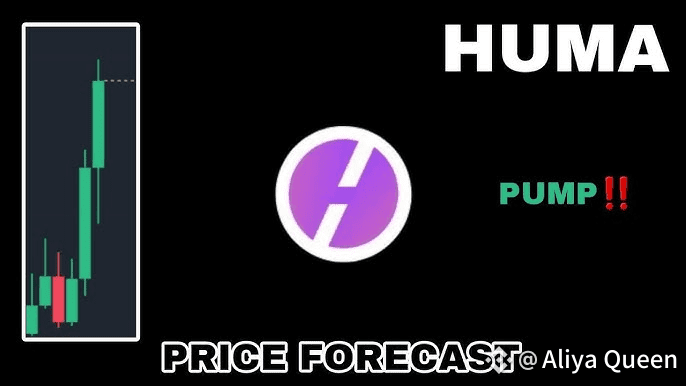In the world of decentralized finance, most lending models demand collateral up front—typically crypto or other on-chain assets. Huma Finance breaks that mold. As the industry’s first true PayFi network, Huma lets you tap into your future earnings—salaries, invoices, remittances—as the backing for on-chain loans. No more locking away tokens you rely on or having to pledge property. With Huma, your expected cash flows become the collateral.
---
What Is PayFi? A New Paradigm in DeFi Lending
PayFi stands for “Payment-as-Finance.” Instead of pledging existing assets, borrowers pledge streams of future income. Huma Finance’s PayFi protocol:
- Analyzes projected inflows (paychecks, client invoices, payroll receipts)
- Assigns a present-value estimate to those future payments
- Issues liquidity against that valuation on-chain
This bridges the gap between traditional invoice financing and the transparency and speed of blockchain lending. Suddenly, anyone with a verifiable income stream—no matter how small—can borrow without the hurdles of traditional credit checks or upfront collateral.
---
Under the Hood: Time-Value-of-Money Meets Smart Contracts
At its core, Huma uses a Time-Value-of-Money (TVM) framework adapted for blockchain:
1. Stream Verification
Users connect their wage streams or invoice schedules via secure oracles.
2. TVM Calculation
The protocol discounts those future payments back to today’s value, adjusting for risk and duration.
3. Liquidity Allocation
Based on the computed present value, the system mints a corresponding loan amount, typically between 70%–90% of that value.
4. On-Chain Execution
Smart contracts handle disbursal, repayment schedules, and interest accrual, all in a transparent, immutable ledger.
This process happens in minutes, with no manual underwriter intervention, yet still incorporates rigorous real-world data feeds.
---
Key Features That Power Huma Finance
- Uncollateralized Borrowing
Use future income instead of crypto tokens or real estate, opening doors for users without large on-chain holdings.
- Transparent Yield Mechanics
Every interest rate, fee, and repayment event is logged on-chain for full auditability.
- Dynamic Loan-to-Value Ratios
TVM parameters adjust automatically based on borrower credit reputation, income stability, and market conditions.
- Programmable Repayments
Loans can be structured for fixed installments or flexible repayments tied to actual cash flows.
- Community Governance via $HUMA
Token holders vote on oracle integrations, risk models, and fee distributions, ensuring the protocol evolves with user needs.
---
Real-World Use Cases: Beyond Crypto Natives
Huma Finance suits a broad spectrum of borrowers:
- Employees
Advance part of next month’s salary without tapping savings or credit cards.
- Freelancers
Bridge cash-flow gaps by pledging upcoming client invoices, avoiding late payments or high-interest lines of credit.
- Small Businesses
Fund operational costs by tokenizing remittance income from international customers.
- Gig Workers
Leverage predictable rideshare or delivery earnings for quick capital.
Because Huma accepts diverse income forms, previously underbanked and credit-constrained individuals gain secure, affordable access to funds.
---
Security, Compliance, and Risk Management
While Huma’s innovation is disruptive, it also prioritizes borrower protection:
- Decentralized Oracles
Multiple data providers verify incoming pay streams to prevent manipulation.
- Automated Liquidation Triggers
If projected income drops below risk thresholds, the protocol rebalances or asks for gentle top-ups—no sudden margin calls.
- Privacy-Preserving KYC
Users can optionally verify identity off-chain, unlocking higher loan caps while keeping personal data confidential.
These safeguards create a resilient lending environment, marrying DeFi’s openness with institutional-grade oversight.
 ---
---
Roadmap and Future Horizons
Huma Finance’s development roadmap includes:
- Payroll Integration APIs
Direct plugins for major payroll systems, streamlining income verification for enterprises.
- Cross-Border PayFi
Tokenized remittance corridors that let workers in one country collateralize future receipts from abroad.
- Risk Scoring Models
On-chain credit scoring powered by machine-learning oracles, refining TVM accuracy.
- Layer-2 Scaling
Deployments on Avalanche, Polygon, and other high-throughput chains to reduce gas costs.
Each milestone further embeds PayFi into everyday financial workflows, making uncollateralized, on-chain borrowing the norm, not the exception.
---
Why Huma Finance Matters
Huma Finance redefines borrowing by aligning capital with human productivity instead of locked assets. In doing so, it:
- Democratizes access to credit for millions with steady incomes
- Reduces reliance on unstable collateral markets
- Speeds up liquidity provision through automated on-chain processes
- Encourages broader DeFi participation across income brackets
As traditional banks increasingly explore blockchain rails, Huma stands out by proving that future earnings are as reliable as current savings—if harnessed with the right technology.
---

Claim Tomorrow’s Earnings Today
Huma Finance’s PayFi network transforms the way we think about loans. By valuing future income streams and executing credit decisions on-chain, it unlocks capital for users who were previously sidelined by traditional lending’s collateral requirements. If you’ve ever needed liquidity ahead of payday, invoicing, or remittance receipt, Huma Finance offers a transparent, inclusive, and secure gateway to funds—simply by leveraging what you’ll earn tomorrow.
Stay in the loop via @Huma Finance 🟣 and join the conversation with #HumaFinance as the protocol expands global access to on-chain credit powered by your own future earnings.